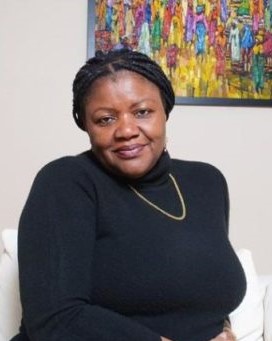
Biographical Dictionary of Enslaved Black People in the Maritimes Whitfield, Harvey Amani. Toronto, University of Toronto Press, and Acadiensis Press, Fredericton, 2022. 236 pages.
Review by Ifeoma Chinwuba
It may not be possible for reparation to be done to the hundreds of thousands of Negroes who suffered enslavement, many of whom died in the process. No restitution by the practitioners and dealers of the obnoxious trade, nor by the government of the day that turned a blind eye to it, is possible. Many of the Blacks remained anonymous, unsung, and unregistered either to enable their masters to circumvent sanctions and operate under the radar, or simply because, the slave dealers did not deem Black folk equal to them and therefore, worthy to grace the municipal records and archives. This is an extreme manifestation of cancel culture; erasure of a demographic by white privilege. Because of the young victims, it is also a case of child labour and abuse.
Whitfield joins the train of historians who seek to restore the humanity of the Blacks enslaved in the Maritimes of Canada. This book acknowledges that they lived; that their sweat and blood contributed to the social evolution and economic development of Canada.
Whitfield’s book also debunks some historical fallacies festering in some circles or being swept under the rug, to wit, that Canada was a haven of freedom and refuge for escaped slaves from the Americas. Whitfield’s treatise proves that residents of Canada engaged in the cross-border trade, importing and exporting and re-enslaving some who fled the south in search of ballast in their capsized lives, only to be captured and bonded anew. Many Americans relocated to the Maritimes with their ‘chattels’ in continuation of ‘slaving.’
457 Ham (c.1783, age 15). Enslaved to Ensign Hubbard, who migrated to the Maritimes after the American Revolution. Ham was probably from Connecticut. (p.77).
Artisans, small business owners, women and farmers, and even missionaries, possessed one or two slaves.
Lt. Gen. John Wentworth and Stair Agnew, a judge of the Inferior Court of New Brunswick. (xxxv).
When a judge is involved in the slave business, the state is complicit.
Missionaries preaching charity and love of neighbour, were neck deep in the illicit commodification of humans!
656 LaVeille Jean was enslaved to the Brothers of Charity in Louisbourg (p.112).
Whitfield avows that the practice of slavery in the Maritimes (Nova Scotia, and New Brunswick) was not on a commercial scale, lacking as they did, large-scale plantations (of cotton, indigo, tobacco, sugar). However, there was a constant va-et-vien in men and materials between the Maritimes and the slave plantations of America and the West Indies, and indeed Africa.
The author distinguishes between domestic slavery or intimate slavery or close-quarter slavery, and commercial forced labour, affirming that the Blacks enslaved in the Maritimes laboured as cooks, cleaners, baby minders, but were also deployed to the owners’ farms to till the ground and harvest crops. However, intimate slavery was still slavery; it was trading in humans, like chattel that could and were bequeathed to younger generations. For instance, on page xxix, we read,
I give [my wife Mary Fowler] my Negro Wench named Hannah to be hers as long as she remains…
Intimate slavery was more pernicious because a slave at close quarters, could, after a hard day, be roused to empty the chamber pot at 3.am.
Whitfield’s book captures 1465 lives (pun intended). The biographical information is grossly malnourished, starved of data; names are lost, dates of birth and death unsure and circumstantial. I would, therefore, consider the Biography more of a census of men, women, children enslaved in the Maritimes. At pages 188-189, the following reference is made to ten unnamed slaves:
1125-1134 UNNAMED (slave? c.1784)- This unnamed person was possibly enslaved to Beverly Robinson in New Brunswick.
Descriptions of the Negroes are gleaned from the Missing Persons Reports filed by owners of escaped servants. It is commendable that Whitfield is able to weave these fragmented details and references together to compose a life lived. In other words, Whitfield uses extrapolation to arrive at the existence of some enslaved people, especially children, who would be the offspring of two slaves or the result of sexual imposition of sybaritic masters on the slave wench. This signposts the possibility of generational slavery. There could therefore be duplications arising from cross-references. For example, No. 32 and No. 33, seem to point to the same person.
Omissions abound due to the non-documentation of the Blacks. This does not detract from the freight of the oeuvre. The effort in itself enlarges research in this micro-study of Black Canada.
Nevertheless, Whitfield’s omission to provide a map of the Maritime provinces of Canada is a minus. Cartography would have pictorially contextualized and facilitated understanding of the human traffic.
Whitfield’s tome marks another notch in the totem pole of ongoing scholarly efforts to throw more light not only on the nefarious human trade, which by its underhand nature in the Maritimes, suppressed chronicling, but also in Black Canadian history. More research in this regard, would incrementally flesh out the skeletons in the field.
Ms. Ifeoma Chinwuba is the 2021-2022 Writer-in-Residence of the Department of English and Film Studies, University of Alberta, Edmonton. A retired diplomat, she is the author of five books, made up of novels, poetry in dialogue, and a juvenile novella. Her “Merchants of Flesh” and “Waiting for Maria” have, at different times, won the Prose Prizes of the Association of Nigerian Authors (ANA), while “Waiting for Maria” was on the Long-list of The Commonwealth Writers Prize, 2008. Web: Ifeomachinwuba.com

